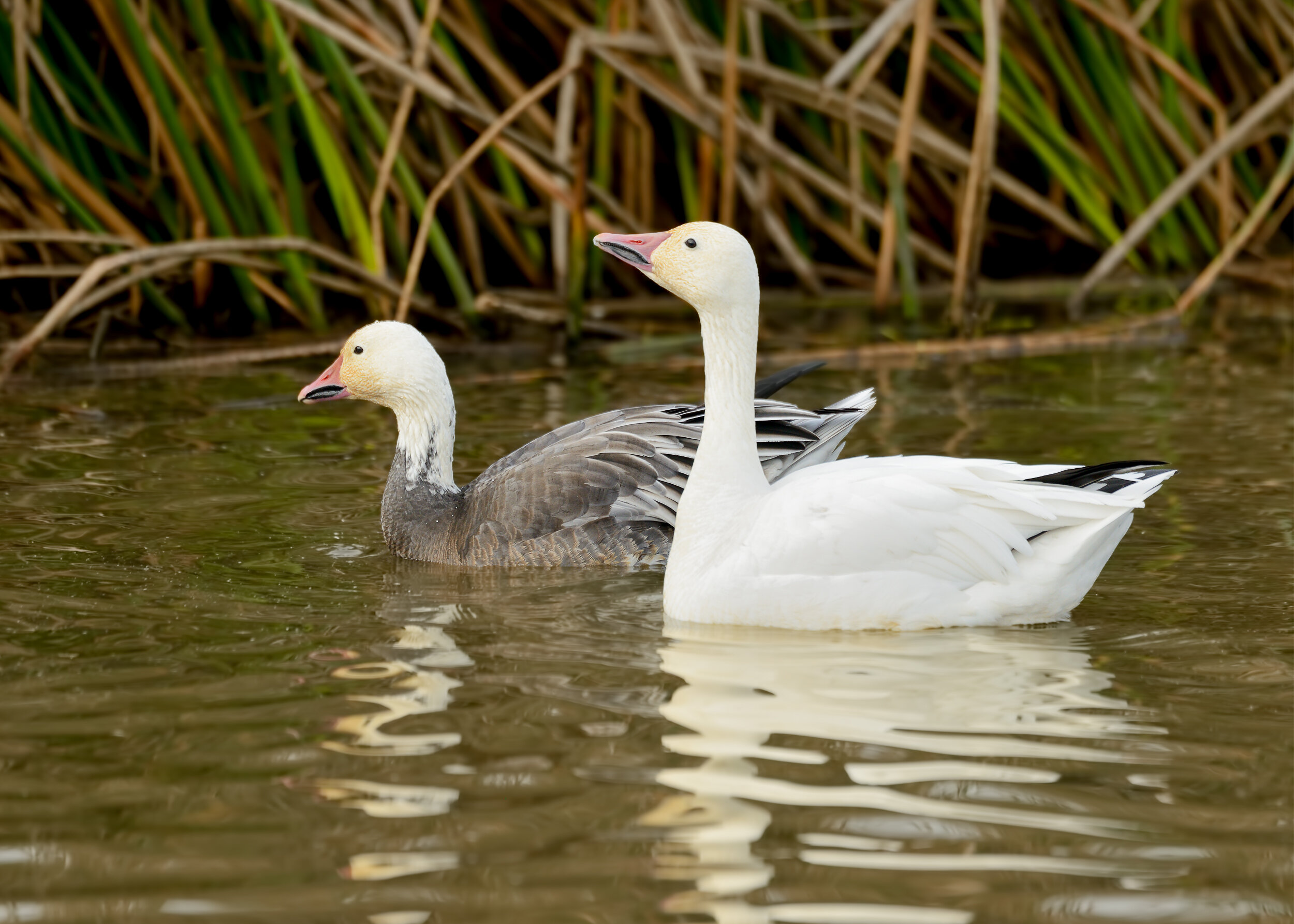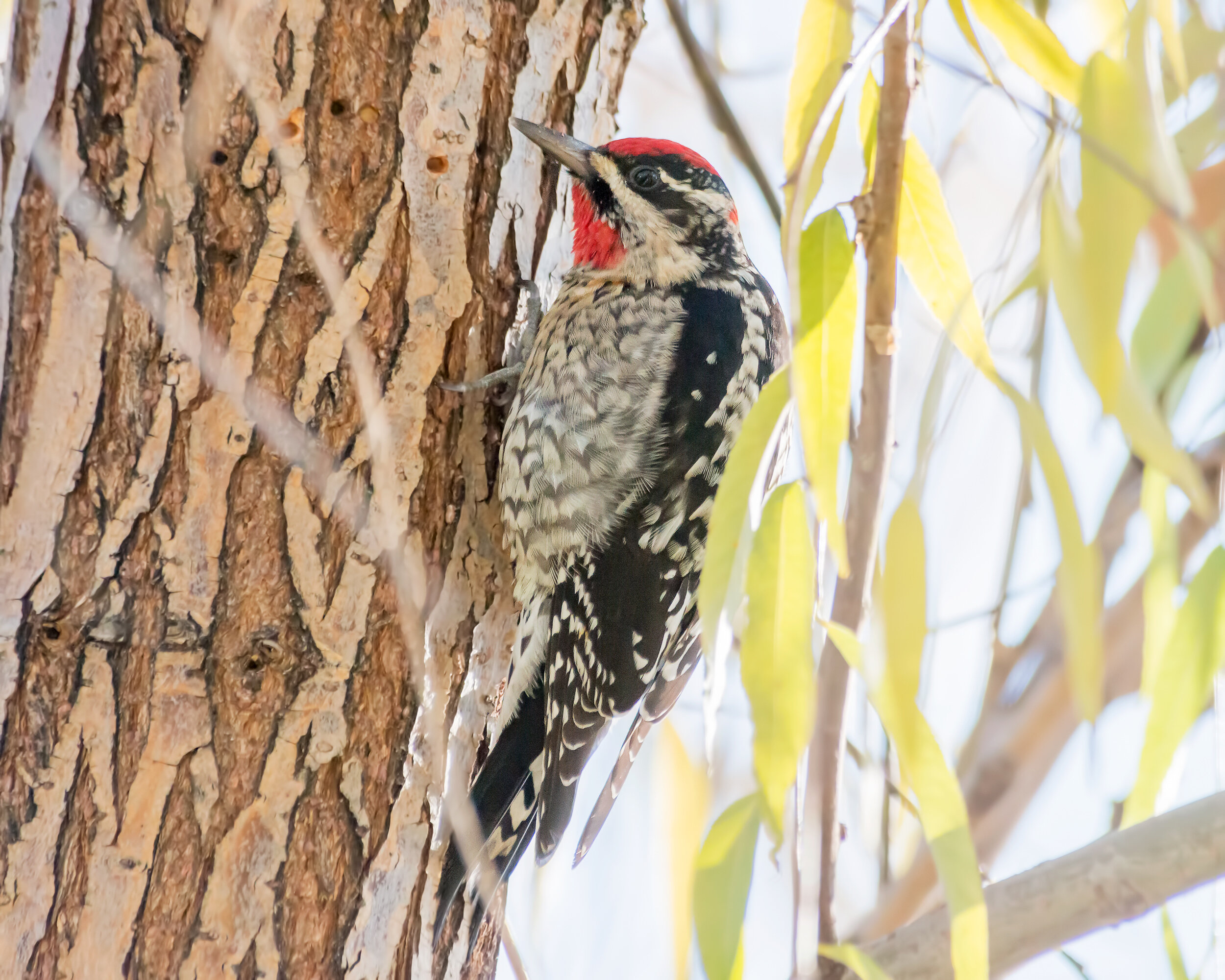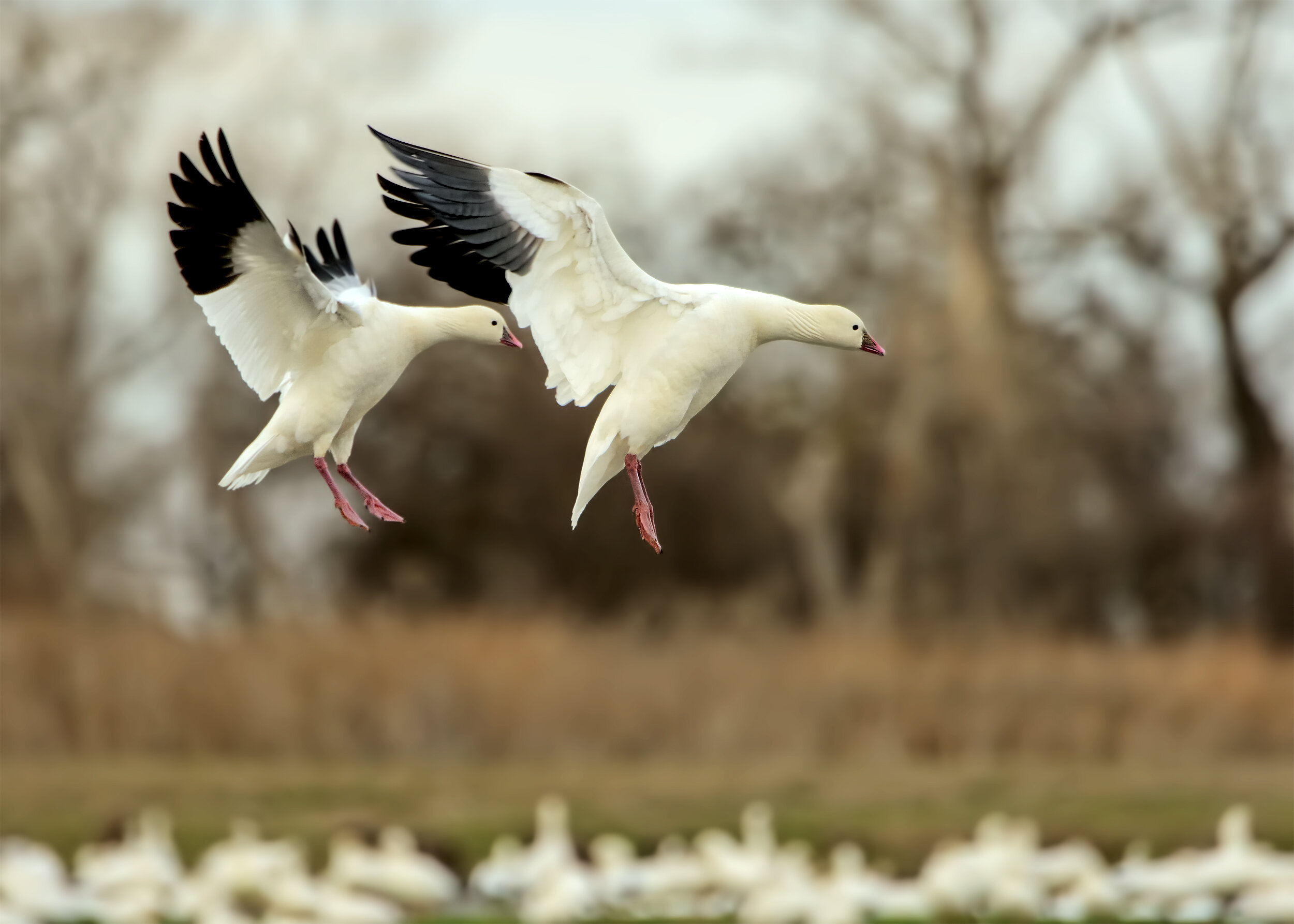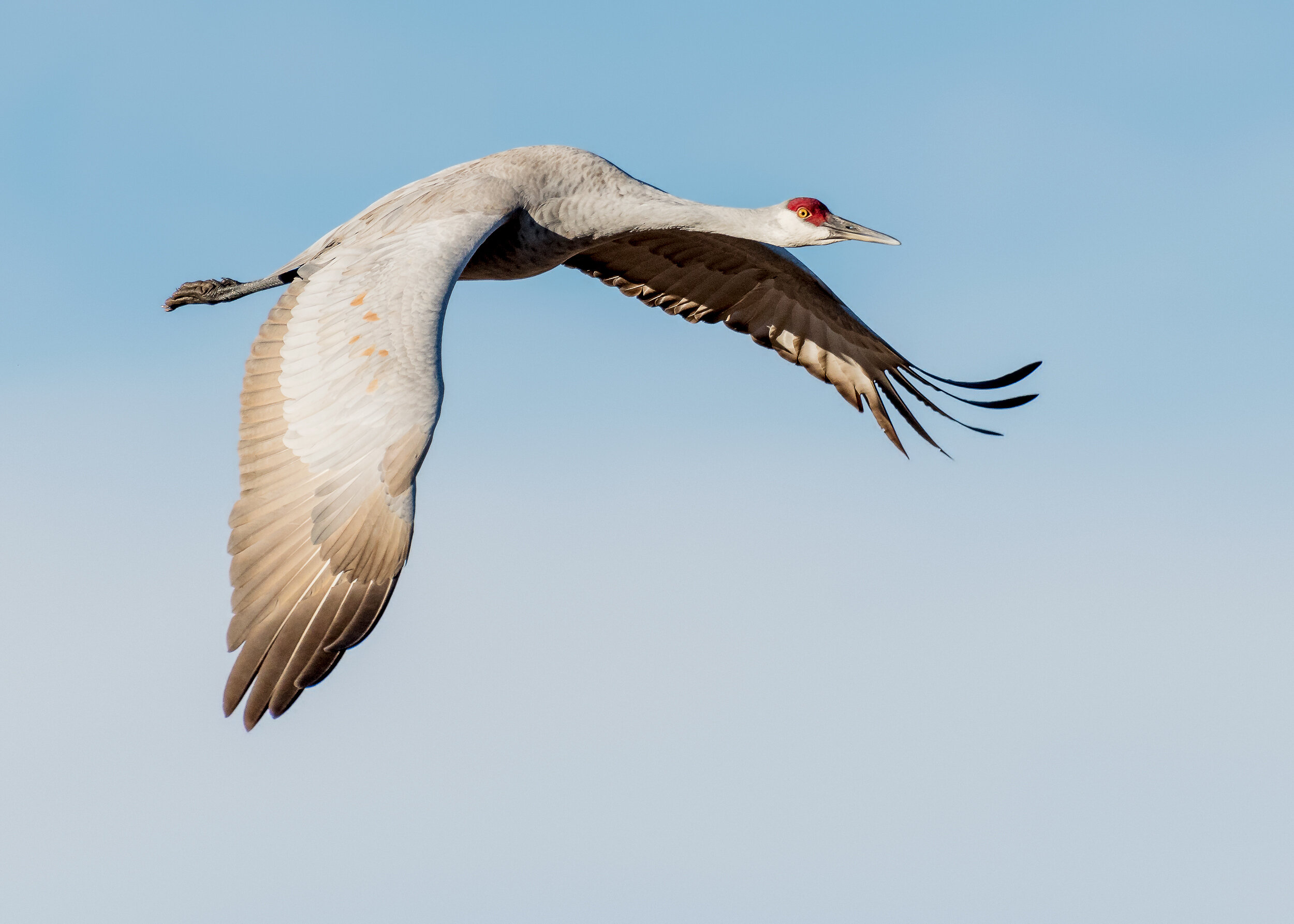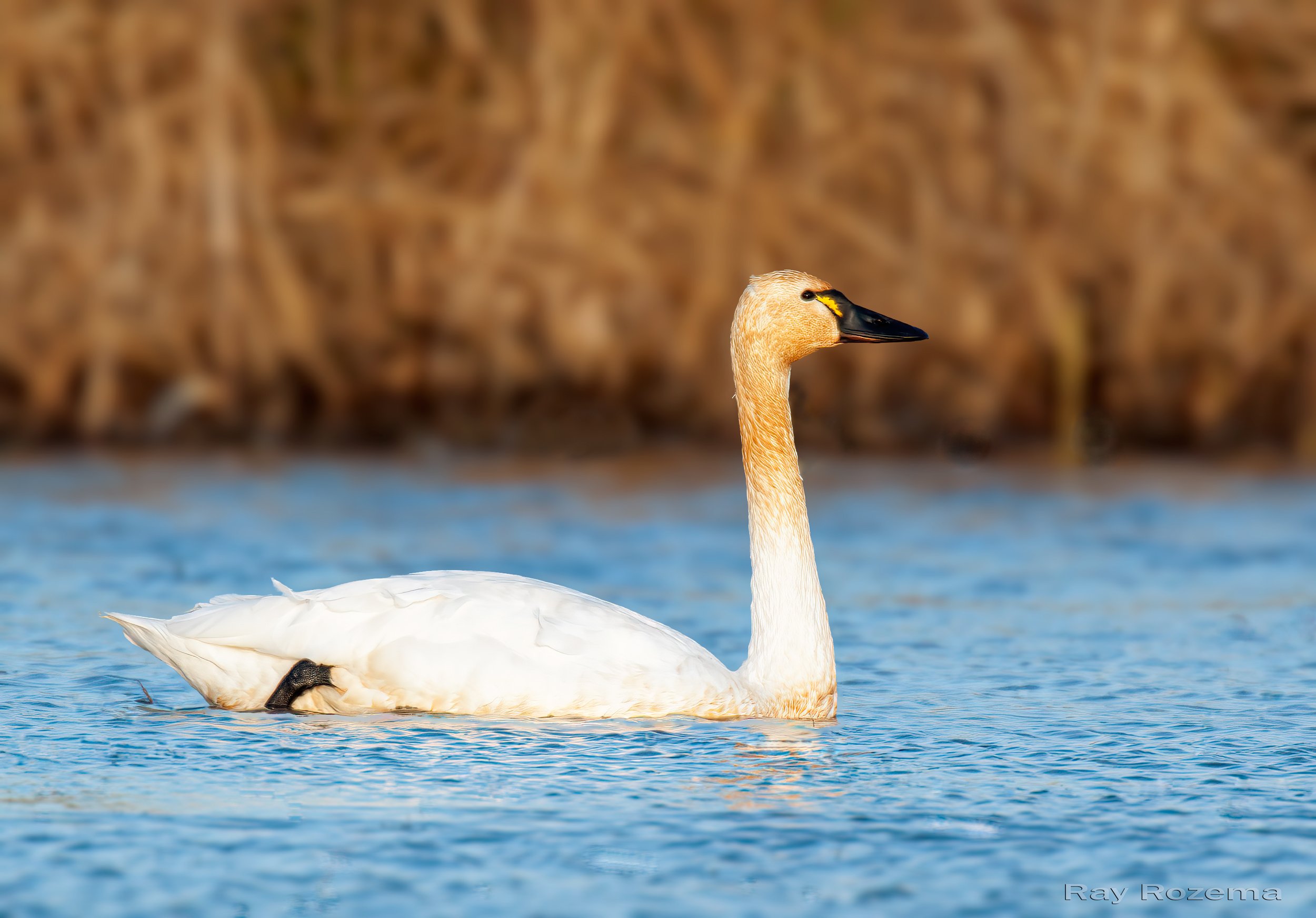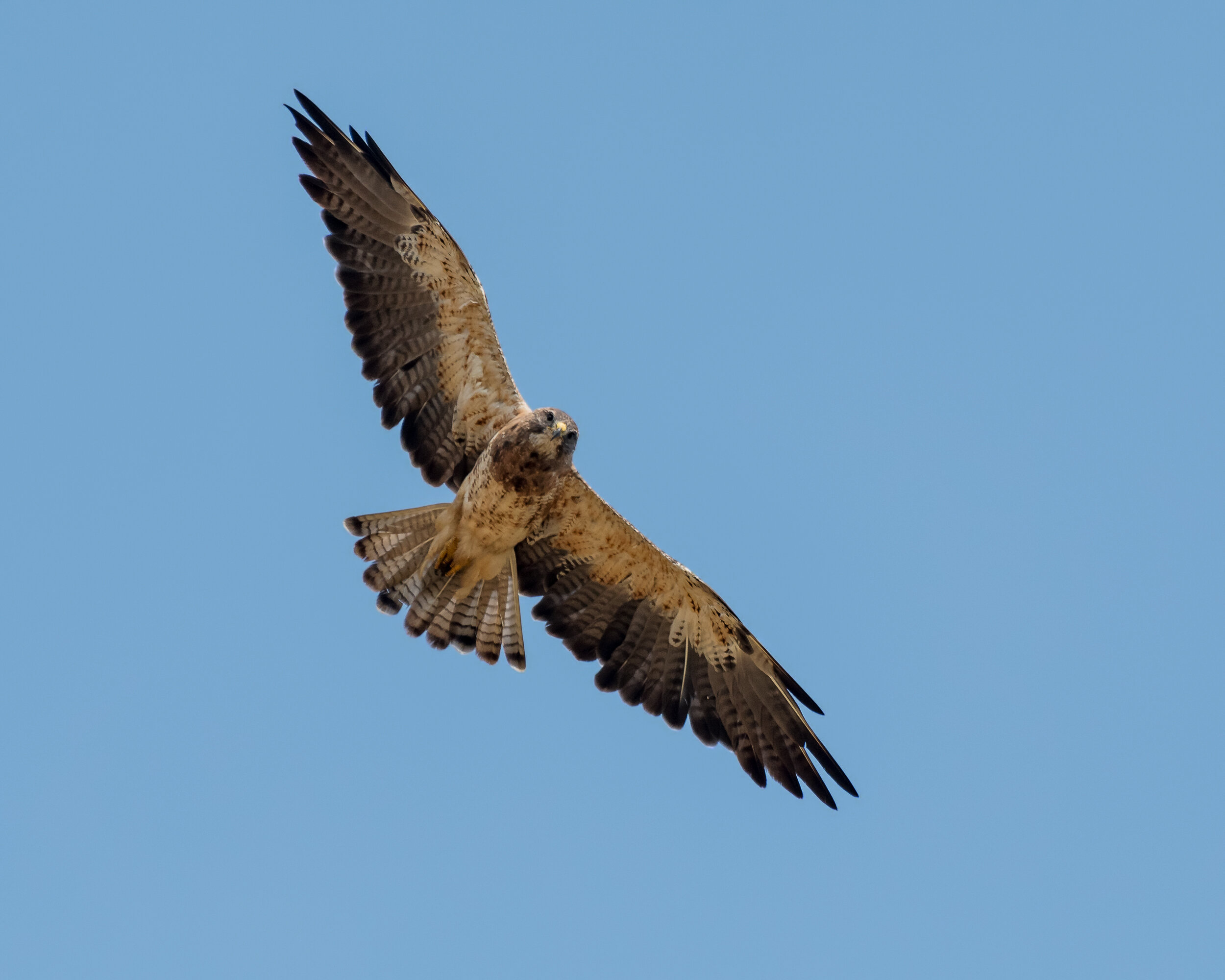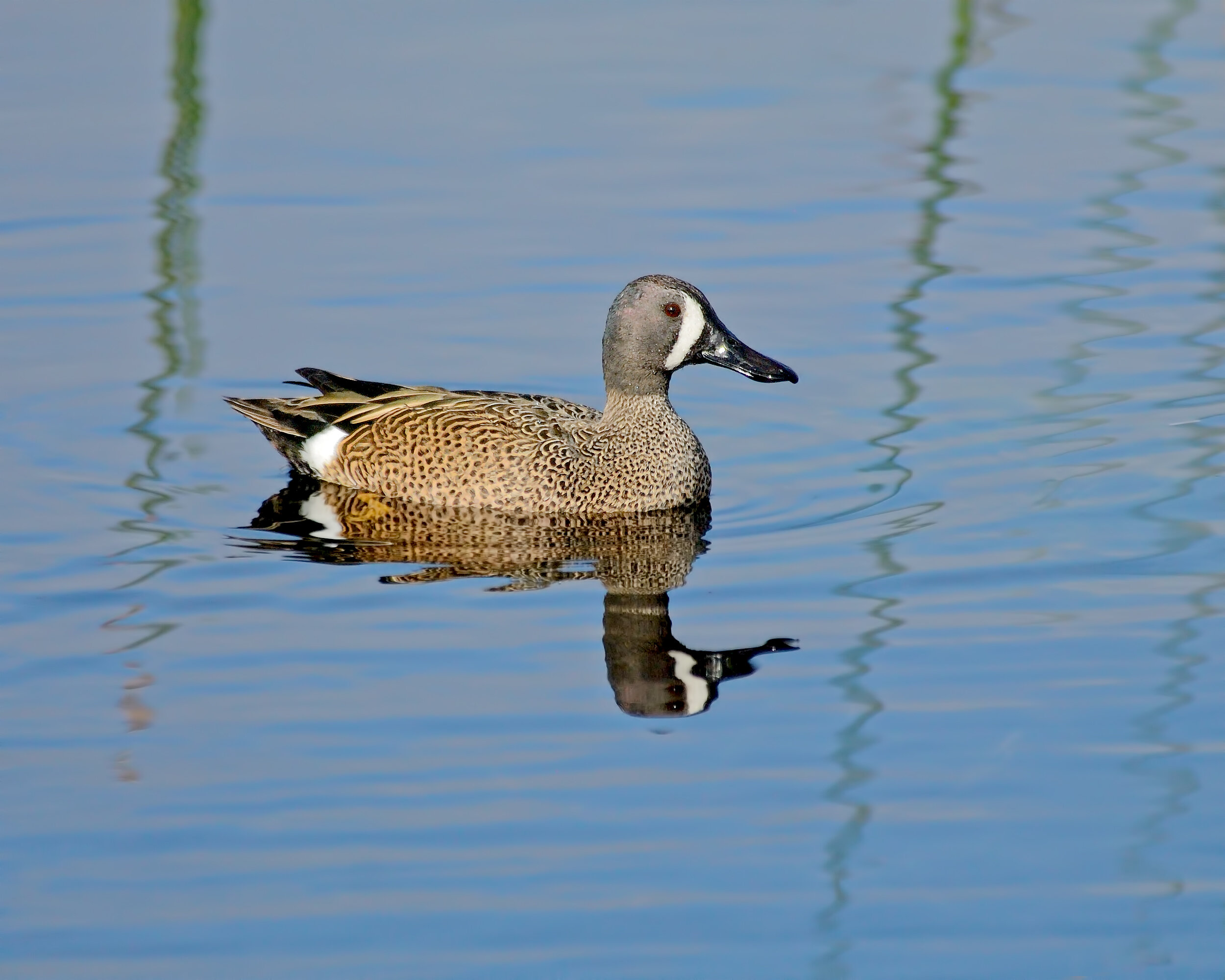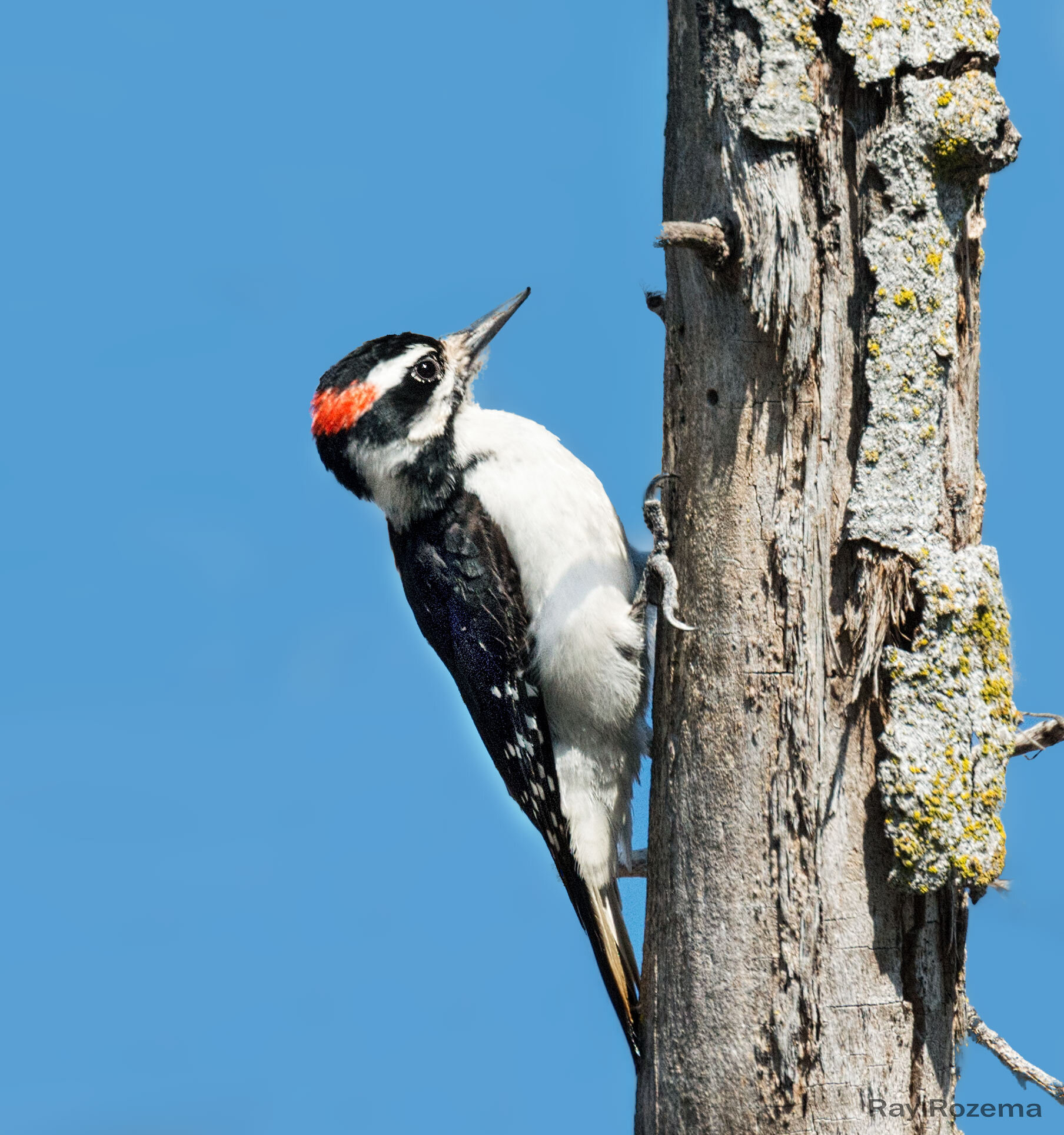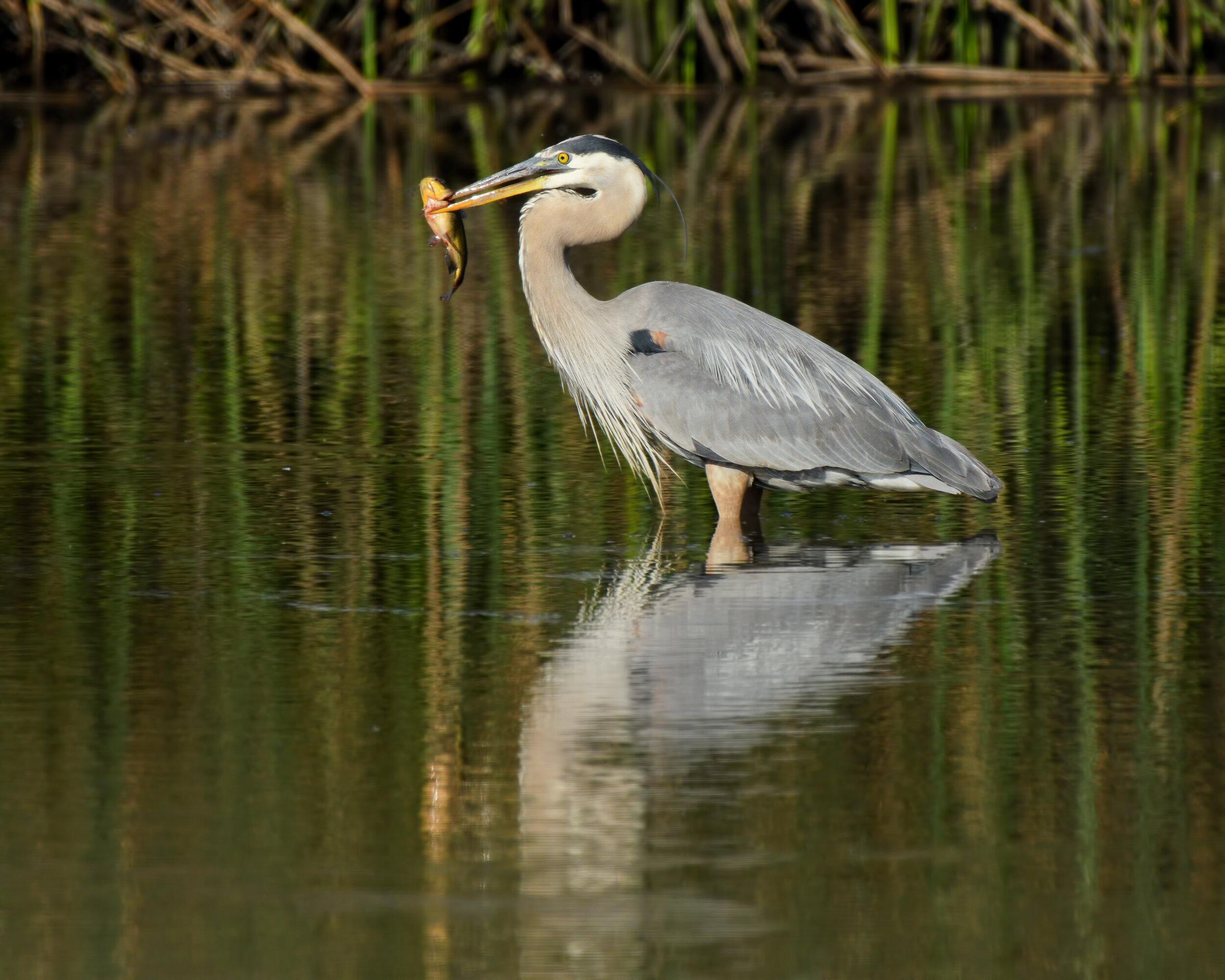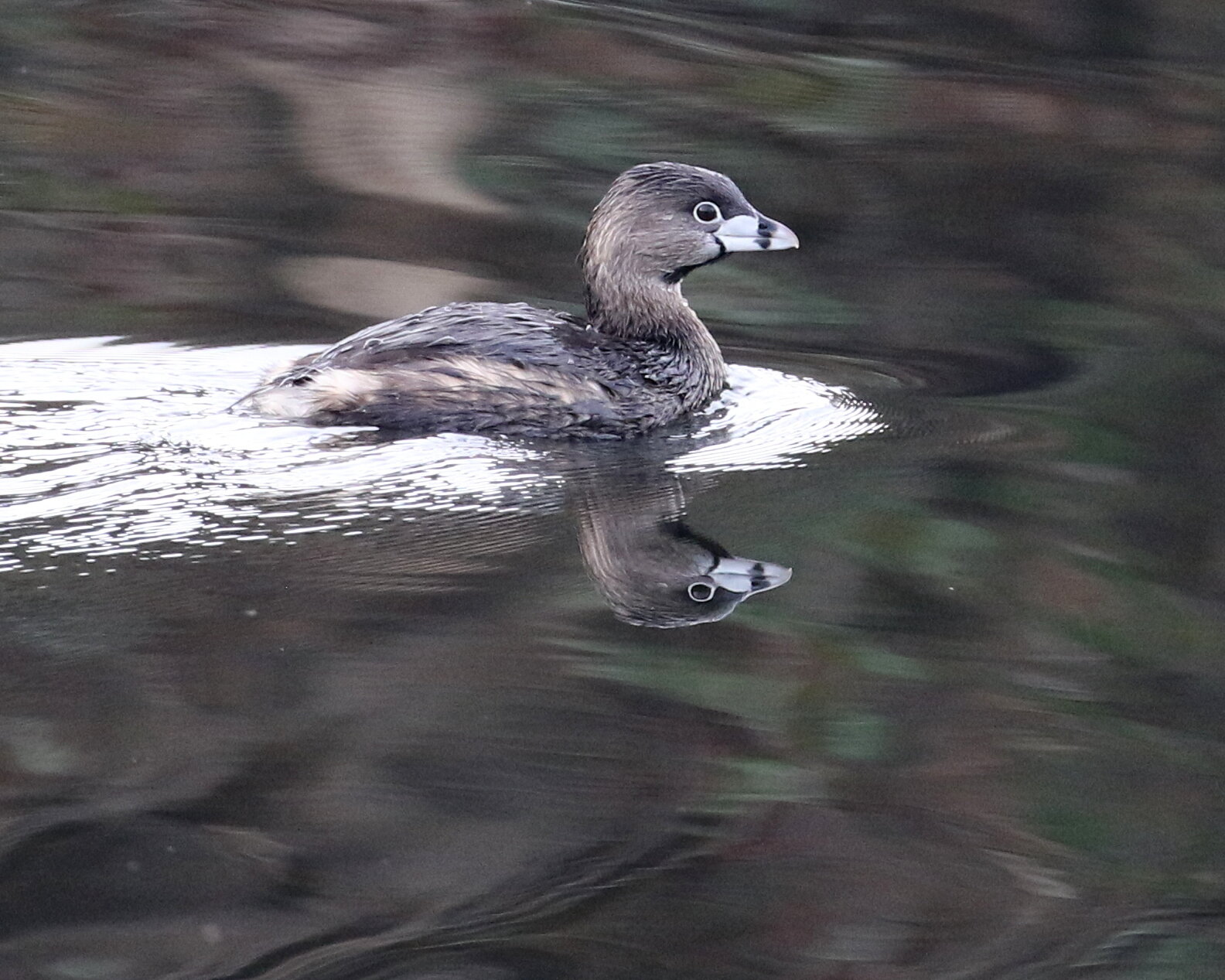WINTER
Winter in the Sacramento area is a wonderful time to go birding. Ducks and geese fill the flooded fields and ponds, while the wooded areas resound with permanent and winter residents, such as woodpeckers and sparrows. The weather is generally cool enough that you can start off a little later in the day but be sure to check road and trail conditions before setting out. Here are some great places to bird in the winter.
An interactive map of these locations can be found here or at the bottom of this page.
If you have only a few hours to spare for birding on a winter weekend morning, you might want to visit East Lawn Cemetery on Folsom Boulevard in East Sacramento. Filled with winter residents, over the years, Townsend’s Warbler, Black-throated Gray Warbler, and Black-and-white Warbler have been found here in the winter.
The large conifers and berry-laden shrubs and trees of William Land Park attract winter flocks of American Robin, Cedar Waxwing, Yellow-rumped Warbler, Dark-eyed Junco, and American Goldfinch. This is a good place to look for wintering Varied Thrush (under the redwoods), Red-breasted Nuthatch, Golden-crowned Kinglet, Townsend’s Warbler, Purple Finch and Pine Siskin.
This unassuming and unsung area holds some of the greatest raptor concentrations in the region. The rice fields can host immense flocks of Snow and Greater White-fronted Geese, and Tundra Swan. When water conditions are right, the shorebirds can be very good.
A walk through the sanctuary is a delight in any season. Over 195 species of birds have been recorded. In summer, Swainson’s Hawk soar overhead. Great Horned Owl is common here. Wood Duck, herons, egrets, and Pied-billed Grebe can be found year-round. Springtime brings a variety of warblers as well as nesting Western Bluebird, Bullock’s Oriole, and Black-headed Grosbeak. In winter, sparrows, towhees, kinglet, Yellow-rumped Warbler, and Northern Flicker are among the common birds.
Approximately 1 hour north of Sacramento, the Colusa NWR is a great location to view large waterfowl concentrations, especially during December and January.
In winter, you will often see the sky at Gray Lodge filled with geese and ducks. Snow Geese, as well as the greatest concentration of Ross's Geese in the United States, are found here along with Greater White-fronted Geese and Canada Geese.
From October through March, many fields in this area contain Sandhill Cranes in varying numbers, with the best time for observation occurring during January, February, and March when some fields are flooded, and there are also large numbers of wintering shorebirds and waterfowl.
Staten Island is another excellent site for viewing large numbers of Sandhill Cranes, geese, Tundra Swans, other waterfowl, and shorebirds.
This magnet for birds on the Solano-Yolo County line is formed by a small diversion dam on Putah Creek several miles east of Lake Berryessa and the Vaca Mountains, the eastern-most ridge of the North Coast Ranges. For best birding, visit the area early in the morning; fall and winter are most productive, due to the arrival of winter visitors.
The multiple locations described in this section (Folsom Point, Mormon Island Wetlands, Morman Island Lake Access, Brown’s Ravine, Falcon Crest, Sweetwater Creek trail to Folsom Lake, and Sweetwater Trail) can be done as individual short excursions or as a full day of birding, progressing from one stop to the next.
Beals Point is probably the single best location for viewing large numbers of gulls and water birds on Folsom Lake. From 3pm until dusk thousands of gulls flying in to roost on the lake. As many as 14 Common Loons have been recorded just from this site.
An afternoon hike in this area on a clear day in the middle of January will reward the birdwatcher with sunshine, green foothill grasses, early blooming manzanita and coyote bush, and over 60 common species of birds. This is also the best time of year for sighting Bald Eagles and Osprey soaring along the lake’s shoreline.
This year-round pond in West Sacramento near the eastern edge of the Yolo Causeway is one of the best places in California to see Blue-winged Teal each fall and winter. Additionally year-round resident Black-necked Stilts and American Avocets breed here in the spring.
This Global-Priority Level Important Bird Area now contains more than 25,000 acres and is just minutes from downtown Sacramento. Both seasonal and permanent wetlands are present as well as riparian woodland and valley grassland, providing habitat for a large variety of birds.
This evolving wetland consists of 400 acres of ponds and upland habitat of varying depths and is a continuation of Davis’s storm water and wastewater treatment process. The Wetlands are only open to the public during limited times during the year. From February 15th through August 31st, the wetlands are open seven days/week from 7 a.m. to 1 p.m. From September 1st through February 15th, the wetlands are open Mondays only from 7 a.m. to 1 p.m.
The treatment ponds at this location have a fine history of attracting good shorebirds, gulls, and waterfowl. The peak season for finding rare shorebirds is from July through September, depending on water levels. Good numbers of shorebirds and gulls can be found in the winter, and spring migration can be productive as well.
Because of its varied habitat, a large variety of birds may be seen in North Natomas. Hawks and blackbirds inhabit the grasslands. In the right season shorebirds, ducks, geese, and swans fill the rice fields. Riparian areas are rife with titmice and woodpeckers year-round and migrant warblers in spring and fall.
The more than 45,000 acres around the Cosumnes River that make up the Cosumnes River Preserve have been designated as a Globally Important Bird Area with more than 300 species recorded.
This seldom visited portion of Sacramento County, including Sherman Island and Brannan Island, has enormous potential. There can be thousands of waterfowl, and many raptors, shorebirds, sparrows, and blackbirds (including Yellow-headed and Tricolored) with a diversity of rarities showing up over the years.
Michigan Bar Road is another location where the possibility of less common species is the draw, with Hairy Woodpeckers, Steller’s Jays, Band-tailed Pigeons, American Dippers, and Lawrence’s Goldfinches all rare but possible.
The main Chinook salmon run begins in October, and hundreds of gulls as well as large numbers of Turkey Vultures arrive to feed on the dying fish. This feast may bring in an occasional Bald Eagle. Ospreys are also often seen in winter along with flocks of Common Goldeneye, Common Merganser and the occasional Barrow’s Goldeneye.
Walk the trails along the river and you may find Spotted Sandpipers, Greater Yellowlegs, Great Blue Herons, and Great Egrets hunting at the water's edge while Wood Ducks and Common Mergansers float along. Black Phoebes, Bushtits, and Acorn Woodpeckers are seen year-round. In the spring and summer Ash-throated Flycatchers, Western Kingbirds and Bullock's and Hooded Orioles are all possibilities.
In the fall and spring, migrating songbirds such as Townsend’s, Hermit, Nashville and Wilson’s Warblers, as well as Bullock’s Orioles, and Black-headed Grosbeak may be spotted. In winter, California, Herring, and Ring-billed Gulls are the most common species. One might also see less common Glaucous-winged, Iceland, or Short-billed Gulls.
More than 70 acres of riparian woodland adjacent to the Effie Yeaw Nature Center (EYNC) have been preserved as a nature study area within the American River Parkway. Because this birding spot is easy to reach and includes a variety of habitats, it is possible to sight more than 100 species during the course of a year. In the spring, migrating warblers move through the woods. The crowned sparrows return each fall, and winter brings the goldeneyes back to the river.
Riverbend Park has a variety of habitats with trails throughout. You can walk along the American River in search of goldeneyes or sandpipers; search the woods for woodpeckers, sparrows, and wrens; or explore the open areas for raptors soaring in the sky and hummingbirds flitting among the bushes.
Known for its diverse habitats, William B. Pond has fast flowing water where riffles and gravel bars are present, sandy riverbanks, riparian woodlands, a nesting rookery, open areas and woodlands edges, plus a wonderful urban park. All these habitats draw in a great variety of birds making it one of the most popular birding locations along the American River Parkway.
Throughout the year informal trails provide access to the riparian forest. In the winter this is a good area for sparrows and wrens. During spring and fall migration, look for warblers, vireos and flycatchers in the oaks, willows, and cottonwoods.
In spring, look for migrating warblers, vireos, flycatchers, and grosbeaks. In winter, look for Dark-eyed Junco, crowned sparrows, winter warblers, Ruby-crowned Kinglet, Cedar Waxwing, Red-breasted Sapsucker, and Hermit Thrush.

To use the map above, click on any icon. You’ll find the name and a brief description with a link to additional information. Alternatively, you can click on the square with an arrow in the upper left hand corner of the map to open a complete list of all the locations on this map. The map is easier to use if you enlarge it by clicking on the partial square in the top right portion of the map (hover your cursor over the partial square and it will say “View larger map”).
Banner Photo Credit: Snow Goose by Daniel Lee Brown

